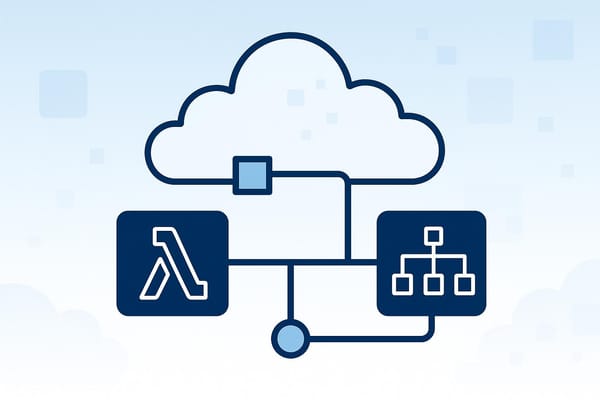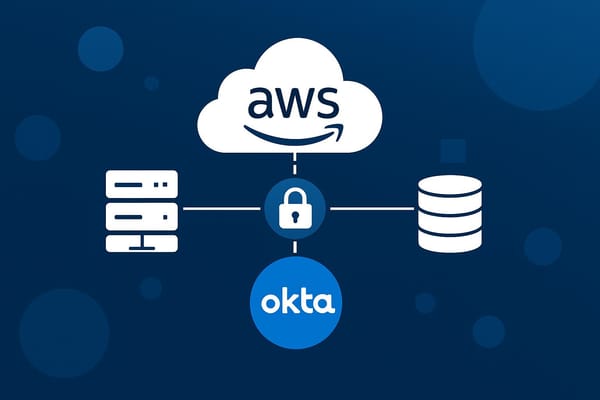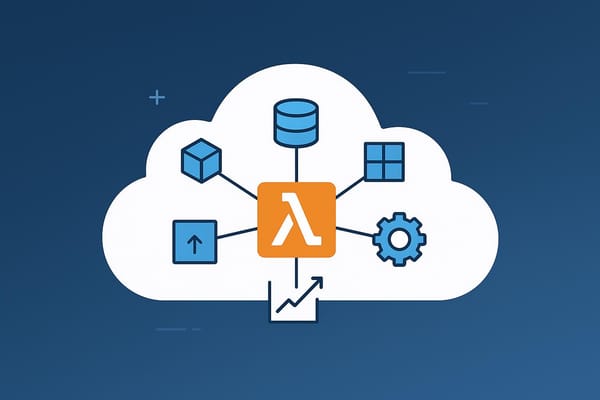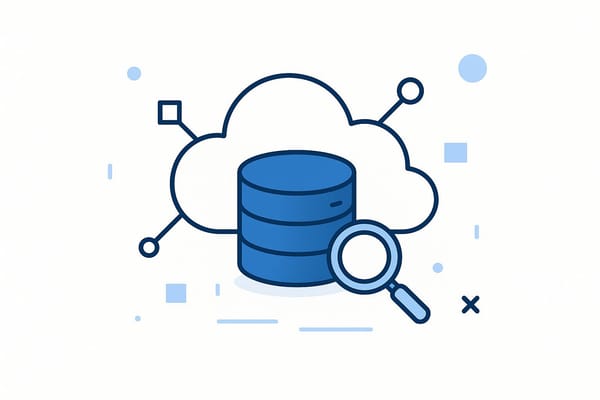How Cost Allocation Tags Reduce AWS Costs
Unlock cost savings in AWS with effective cost allocation tags to track, manage, and optimise your cloud expenses across projects and departments.
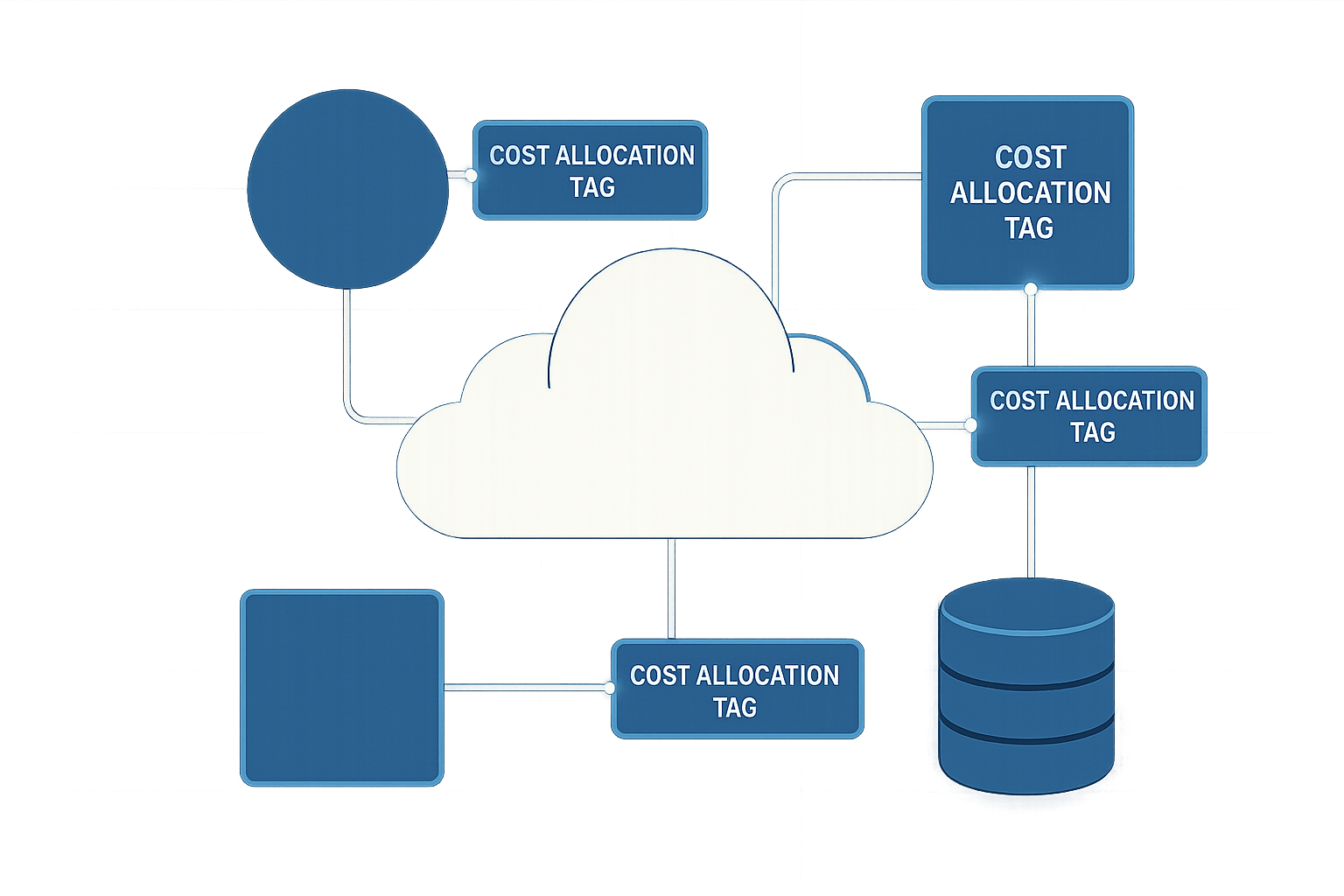
Cost allocation tags in AWS help you track and manage cloud expenses by categorising resources with key-value pairs. These tags allow businesses to break down costs by department, project, or team, offering better visibility and control over spending. Without them, your AWS bill is just a lump sum, making it harder to pinpoint inefficiencies or allocate budgets effectively.
Key benefits include:
- Detailed cost tracking: Organise expenses by categories like project, environment, or owner.
- Budgeting support: Use insights from tags to set realistic budgets and monitor spending.
- Cost control: Spot underutilised resources or unnecessary expenses to reduce waste.
- Enhanced reporting: Tags integrate with AWS tools like Cost Explorer for better analysis.
To use cost allocation tags effectively, you need to:
- Create tags using the AWS Tag Editor with a consistent naming convention (e.g.,
Department=Finance). - Activate tags in the AWS Billing and Cost Management console (takes up to 48 hours to reflect in reports).
- Analyse costs using AWS tools like Cost Explorer or AWS Budgets.
For small and medium-sized businesses (SMBs), tags simplify expense management, improve resource allocation, and help avoid overspending. Start tagging early, maintain consistency, and pair tags with AWS cost tools for maximum efficiency.
How to use cost allocation tags from Cost Explorer to see resource specific cost
How to Create and Use Cost Allocation Tags
Cost allocation tags help you track and analyse your spending in AWS. To get started, you'll need to create, activate, and use these tags effectively. Here's a breakdown of how to set them up and put them to work for better cost insights.
Creating Tags
The AWS Tag Editor is your go-to tool for applying user-defined cost allocation tags. It allows you to search for resources by service, region, or existing tags and apply new tags across multiple resources at once. Before diving in, it's wise to establish a clear naming convention for your tags. Common tag categories include:
- Owner: Identifies the team or person responsible for the resource.
- Cost Centre: Links the resource to your financial structure.
- Stack: Groups related infrastructure.
- Application: Categorises resources by business function.
For instance, you could use tags like Department=Marketing, Project=WebsiteRedesign, or Environment=Production to organise your resources effectively.
AWS also generates certain tags automatically, such as those in the "aws:createdBy" format. Your custom tags, on the other hand, appear with a "user:" prefix, making it easier to distinguish between system-generated and business-specific tags. For example, you might tag Windows EC2 instances with Key=OS Value=Windows to group them for cost analysis purposes.
To ensure consistency, AWS CloudFormation lets you apply tags to resources via templates, using their Amazon Resource Name (ARN) for identification. However, keep in mind that tags won't track costs retroactively, so it's crucial to implement them early. Also, avoid including sensitive information in your tags, as they may appear in billing reports. Once your tags are in place, the next step is activation.
Activating Tags
After creating your tags, you'll need to activate them in the AWS Billing and Cost Management console. This step is necessary for the tags to be used in cost allocation. Note that only the management account in an organisation, or standalone accounts not part of an organisation, can access the cost allocation tags manager.
To activate tags:
- Sign in to the AWS Management Console and open the AWS Billing and Cost Management console.
- Navigate to Cost allocation tags in the menu.
- Select the tag keys you want to activate. For instance, you might choose the
createdBytag under AWS-generated cost allocation tags. - Click Activate to finalise the process.
Keep in mind that newly created tags may take up to 24 hours to appear for activation and another 24 hours to become active in cost reports - a total of up to 48 hours. Activating a tag key enables cost tracking for all resources that share that key. For example, activating the "Department" key will apply to resources tagged as Department=Marketing, Department=Finance, and so on.
If you're using a management account, you can activate AWS-generated tags for all member accounts in your organisation. Tags like awsApplication, which are added to resources linked with applications in AWS Service Catalog AppRegistry, are activated by default. Once activated, these tags are ready to help you monitor and analyse your AWS costs.
Tracking Costs with Tags
Once your tags are active, they unlock detailed cost tracking via tools like Cost Explorer and cost allocation reports. AWS generates a cost allocation report in CSV format, which includes data for both tagged and untagged resources, giving you a comprehensive view of your spending.
Active tags also enhance filtering in Cost Explorer, allowing you to break down expenses by department, project, or environment. This level of detail is invaluable for identifying cost-saving opportunities and ensuring your spending aligns with business priorities.
"AWS cost allocation tags allow you to effortlessly track how you're using AWS budgets and resources to help you better control your cloud costs." - Ross Clurman, Marketing, ProsperOps
For even more robust cost management, combine tags with AWS Budgets and AWS Config. AWS Budgets can alert you when spending exceeds predefined limits for a department or project. Meanwhile, AWS Config can monitor resources to ensure they have the correct tags and notify you if any are missing.
Consistency is key to effective cost tracking. Establish a standard tagging strategy across all teams and environments, and conduct regular audits to maintain accuracy. AWS supports up to 500 active tag keys for Billing and Cost Management reports, offering plenty of flexibility to design a tagging system that fits your organisation's needs.
How Cost Allocation Tags Help SMBs
Small and medium-sized businesses (SMBs) often face challenges in managing their AWS costs due to limited resources and expertise. Cost allocation tags provide a practical way to help these businesses understand, manage, and streamline their cloud spending.
Better Cost Visibility
Cost allocation tags can transform how SMBs view their AWS expenses. Without tags, your AWS bill might just show a general total for services like EC2. But with proper tagging, you can break down costs by department, project, or application. This allows for detailed expense categorisation through organised reports.
For example, if you're managing multiple projects, you can tag resources with keys like Project and values such as Alpha or Beta. This setup enables you to generate project-specific cost reports, making tasks like client billing and internal tracking much simpler. Tags also uncover hidden spending patterns, helping you identify cost drivers and allocate expenses accurately to different teams or projects. This level of detail is especially helpful, as companies without strong cloud financial management often waste 10–30% of their public cloud budget.
Easier Budgeting and Forecasting
Tags turn budgeting into a more informed and data-driven process. By providing detailed insights into spending patterns, tags help SMBs allocate resources more effectively and make smarter budgeting decisions. With granular tracking, expenses can be categorised by projects, departments, or teams, simplifying the process of aligning cloud costs with internal budgets.
For instance, you can create custom reports to see exactly how each team or department uses cloud resources. Alerts for budget overruns can be set up, and real-time monitoring ensures you stay on top of spending. Imagine discovering that your development team’s resource usage spikes during the last week of a sprint. With this information, you can adjust the budget in time to avoid surprises at the end of the month. These insights lead to better cost management and fewer unexpected expenses.
Better Cost Control
Tags also play a critical role in identifying waste and cutting unnecessary costs. With detailed cost attribution, SMBs can quickly spot underused resources, redundant services, or inefficiencies. Filtering views in AWS Cost Explorer by tags makes it easier to analyse spending and identify areas for improvement. For example, you might find that some tagged resources are racking up significant costs but delivering little value, highlighting opportunities for optimisation.
The importance of cost control is clear: surveys by IDC show that cloud infrastructure and Platform as a Service costs are a top concern, with 53% of respondents citing them as a key area for cost containment. For SMBs, which often operate on tight budgets, these inefficiencies can have a disproportionate impact. By tagging resources based on business categories - like cost centres, application names, or owners - SMBs can organise costs across services and maintain tighter spending control. This structured approach makes it easier to determine which resources are essential and which can be scaled back or eliminated.
Cost Allocation Tagging Best Practices
To keep AWS costs under control, it's crucial to establish a tagging system that evolves alongside your business. A well-thought-out tagging strategy builds on precise cost tracking and ensures long-term cost management.
Use Consistent Naming Conventions
AWS treats tag keys as case-sensitive, so something as simple as CostCenter versus costcenter can cause major confusion in your cost reports and derail your tagging efforts.
To avoid this, stick to consistent naming conventions. AWS recommends using all lowercase letters, separating words with hyphens, and adding a prefix followed by a colon to identify your organisation. For example, a company named AnyCompany might use tags like anycompany:cost-centre, anycompany:environment-type, and anycompany:application-id.
Prefixes like "Project:" or "Department:" also make it immediately clear what the tag represents. Make it a habit to review and update your naming standards regularly to ensure consistency across all AWS resources.
Maintain Tags Regularly
Tags need ongoing attention to stay useful. As your business operations change, your tags should reflect those updates.
AWS environments are highly dynamic, with resources being created, modified, and deleted frequently. If tags become outdated or incorrect, they can lead to inaccurate cost reporting and poor resource management.
Start tagging resources right from the beginning - trying to apply tags retroactively can be a headache. Also, ensure your team understands the importance of tagging and follows your naming conventions consistently.
Connect with AWS Tools
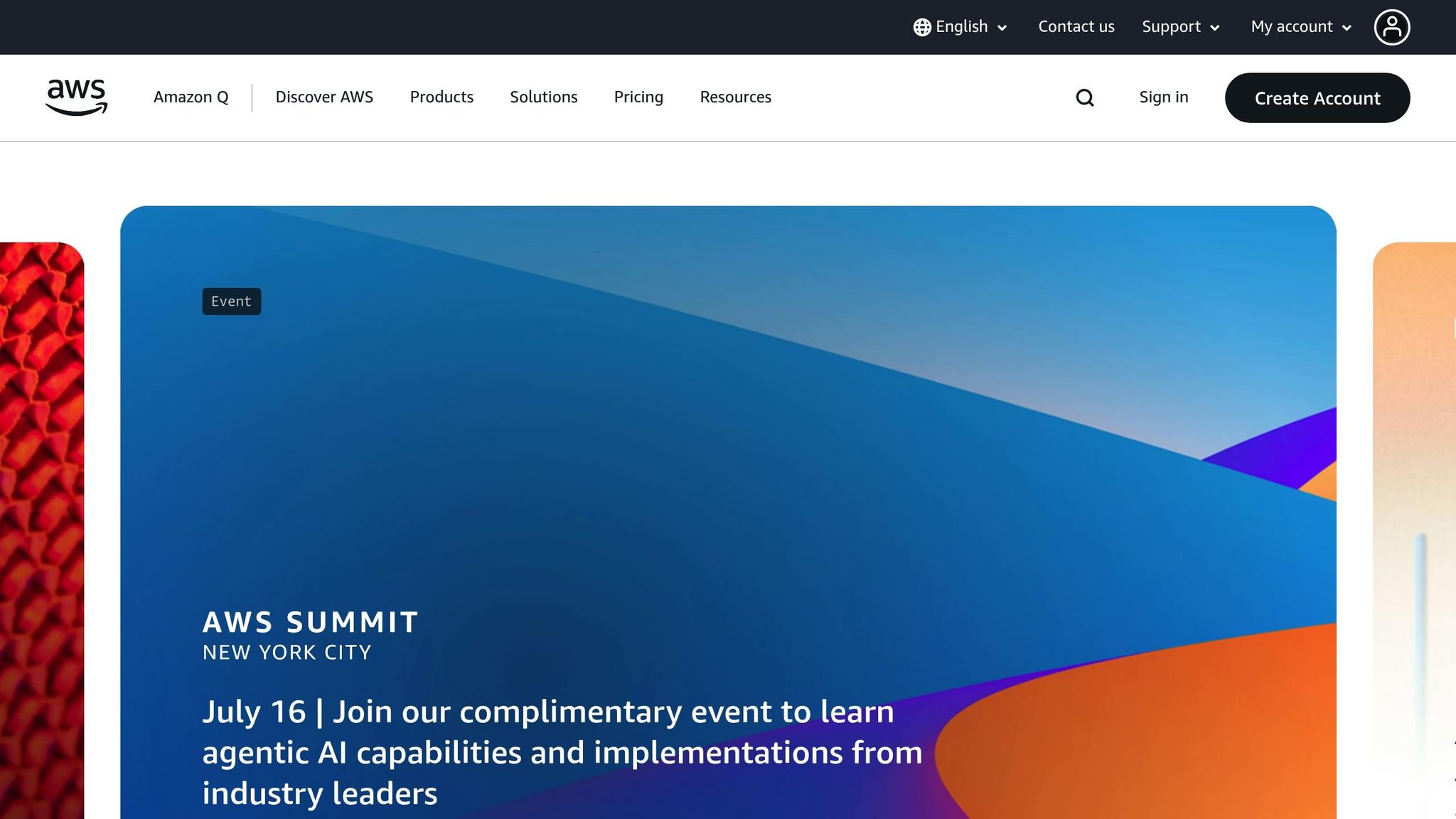
Tags become far more powerful when paired with AWS's cost management tools, turning them into actionable insights.
For example, you can integrate tags with AWS Cost Explorer, Cost and Usage Reports (CUR), and Budgets to filter spending by team, project, or department. CUR offers detailed breakdowns of costs based on your tags, while AWS Budgets lets you set custom spending limits and receive alerts if you exceed them.
For deeper analysis, tools like Amazon QuickSight can work with CUR and Cost Explorer to track spending patterns, identify trends, and flag anomalies. AWS Glue can also help by cleaning and structuring your CUR data for use in analytics platforms like QuickSight, Power BI, or Tableau.
"Cost Allocation Tags are helpful in better organising the costs and usage of your AWS resources, however, they are best used in conjunction with other cost analysis tools such as Cost Explorer, AWS Budgets, Budget Reports, Cost and Usage Reports (CUR), Cost Categories, and Anomaly Detection."
Companies that use detailed cost allocation strategies often apply nearly twice as many cost-saving techniques as those that don’t. This underscores the importance of using tags as part of a broader cost management plan, not as a standalone strategy. By combining tagging best practices with AWS's cost tools, you can unlock meaningful savings.
How Cost Allocation Tags Reduce AWS Costs
Cost allocation tags play a key role in simplifying AWS expense management, turning what could be a murky spending landscape into a clear and manageable system. By categorising resources with tags, businesses gain the ability to reduce waste, optimise usage, and ultimately cut costs.
Tagging makes resource optimisation much easier. For example, you can quickly identify resources that are underutilised or sitting idle, allowing you to either scale them down or eliminate them altogether. It also helps you catch resource misallocations - like a development environment unnecessarily using production-level resources or leftover resources from completed projects that haven’t been shut down.
These tags also support better budget planning. By breaking down costs by department, project, or team, you can track exactly how much each group is spending every month. This clarity makes it easier to set realistic budgets and address overspending before it spirals out of control.
"AWS cost allocation tags allow you to effortlessly track how you're using AWS budgets and resources to help you better control your cloud costs." - Ross Clurman, Marketing, ProsperOps
Accountability is another major advantage. Tags enable chargeback and showback processes, where costs are attributed to specific teams or projects. When people see exactly how much they're spending, they tend to be more mindful of their resource use, encouraging smarter, more cost-effective decisions.
This tagging approach doesn’t just provide insights - it drives action. Tagged resources can be filtered and analysed in cost reports, making it easier to build detailed dashboards and maintain better financial oversight. It’s a system that not only clarifies where the money is going but also empowers teams to take meaningful steps toward saving.
FAQs
How do cost allocation tags help SMBs save money on AWS?
Cost allocation tags are a practical tool for small and medium-sized businesses (SMBs) to keep a closer eye on their AWS spending. By tagging resources according to projects, departments, or environments, businesses can gain a clear breakdown of where their cloud budget is going. This makes it easier to spot unnecessary expenses and find opportunities to streamline costs.
Better cost tracking means businesses can make smarter choices about how they use resources, cut down on waste, and ensure their cloud budget supports their key goals. Setting up cost allocation tags is a straightforward yet effective way to take control of AWS expenses, helping SMBs get the most out of their cloud investment.
What are the best practices for using cost allocation tags to manage AWS expenses effectively?
Cost allocation tags in AWS offer a practical way to enhance cost visibility and manage expenses more effectively. To make the most of them, here are some key practices:
-
Use Consistent Tag Names: Stick to a standard naming convention for all tags. For instance, choose
Departmentinstead of mixing it up with variations likeDeptorTeam. Consistency helps avoid confusion and ensures clarity across your resources. - Prioritise Tagging Key Resources: Focus on tagging the most critical resources, such as EC2 instances, S3 buckets, and RDS instances. This approach provides a clearer picture of where your costs are coming from.
- Review and Update Tags Regularly: As your AWS environment changes, make it a habit to review and update your tags. This keeps them accurate and relevant over time.
By following these steps, small and medium-sized businesses can pinpoint unnecessary expenses and streamline their AWS usage, leading to smarter spending and better resource management.
How can cost allocation tags help manage AWS costs more effectively with tools like Cost Explorer and AWS Budgets?
Cost allocation tags in AWS are a handy way for businesses to organise their resources, making it simpler to monitor and manage costs. Once you've set them up, these tags work seamlessly with tools like Cost Explorer and AWS Budgets, giving you a clearer picture of your spending and resource usage.
With Cost Explorer, tagged resources can be analysed to uncover spending trends, identify what’s driving costs, and find opportunities to streamline expenses. On the other hand, AWS Budgets lets you set alerts and keep track of expenses tied to these tags, helping you stick to your budget and plan for future costs. By providing detailed insights and greater control, cost allocation tags help SMBs make smarter financial decisions and cut down on unnecessary AWS costs.

